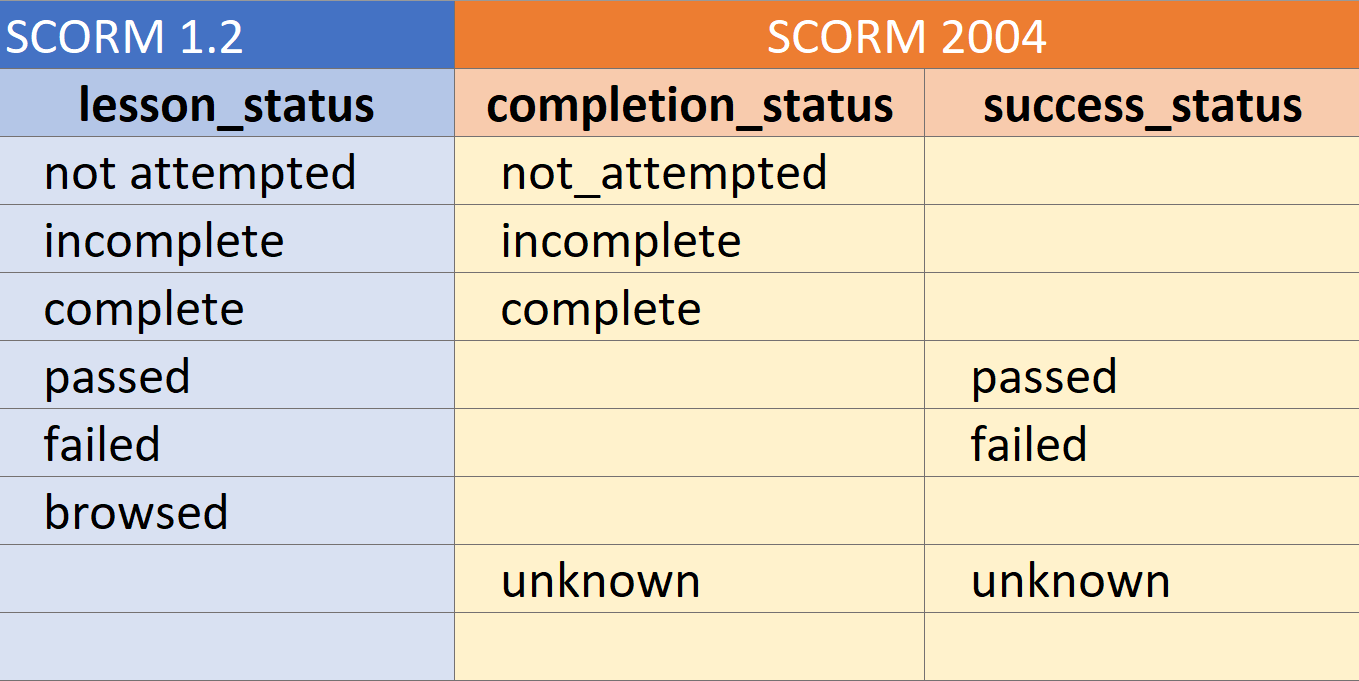.png?width=750&name=SCORM%20(1).png)
The most widely used SCORM standard in Enterprise Learning & Development is still SCORM 1.2. Even though it is now over 16 years old, SCORM 1.2 still does the key things an Enterprise L&D expects from a learning platform. That doesn't mean the later standards are insignificant improvements on SCORM 1.2. It just means that most L&D requirements don't need those improvements. So, for this article I'll address the SCORM 1.2 concerns.
But before we go there, I'd like to point out the most important difference between SCORM 1.2 and SCORM 2004. That is: the completion state and the success state use the same data field. SCORM 2004, on the other hand separates them. This becomes a problem when the LMS has to figure out how to grade a student. Strictly speaking a student who goes all the way through the course content and finishes the quiz has 'completed' it, but that doesn't mean they 'passed' it. Most authoring tools allow you as the designer to state how you want to grade your course:
- passed / failed
- passed / incomplete
- complete / failed
- complete / incomplete
This is captured in the field called 'lesson_status' in SCORM 1.2 and created confusion between SCORM courses and the LMS about how to interpret these options. Most have adopted a pragmatic and unambiguous defacto standard that basically says: A result of 'incomplete' means the course is still in progress and a final score result means all content and quiz are finished as 'passed' or 'failed'. In cases where the student does not participate in a quiz 'passed' means the student has accessed all the content or slides in a course.
Assuming like most organisation you don't need the extras that SCORM 2004, xApi and cmi5 offer you can keep your life simple by sticking to this rule and using SCORM 1.2. That will work for most LMS software.
SCORM 2004 and later standards split completion status and success into separate fields like this:

In almost all cases you can keep your life simple by applying the defacto standard and publishing to SCORM 1.2. LMS's in general apply this and internally separate completion and success status the way SCORM 2004 does.
But what if you need to migrate older content that may not have applied this defacto standard? In that case, check that the LMS allows you to change the rules. If it does, that could save you hours of time and effort, having to republish content to either apply the defacto standard, or upgrade to SCORM 2004.
Online learning in isolation is almost never a reality in real-life L&D environments. This article describes the best configuration for reliable resulting in the SCORM elements of your courses. But for a more comprehensive look at the types of blended environments that are typical in today's corporate training environment we recommend a one on one demo and conversation with the experts.
